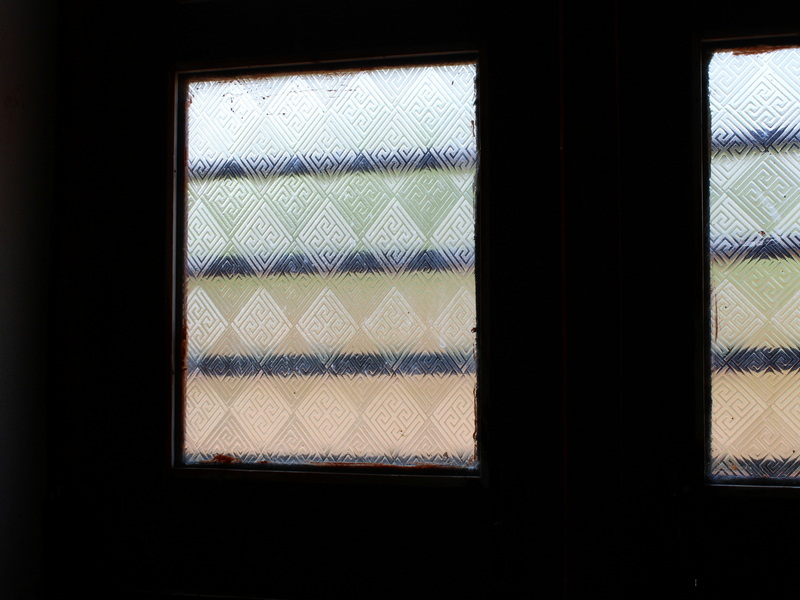English 




Views: 222 Author: Astin Publish Time: 2025-03-13 Origin: Site



Content Menu
● Introduction to Painting Aluminum Window Frames
● Can You Paint Aluminum Window Frames Without Sanding?
● Tips for Painting Aluminum Window Frames
>> Maintenance
● FAQs
>> 1. What type of primer should I use for painting aluminum window frames?
>> 2. Can I use regular household paint on aluminum window frames?
>> 3. How long does it take for the paint to dry completely on aluminum window frames?
>> 4. Can I paint aluminum window frames in cold weather?
>> 5. How often should I repaint aluminum window frames?
Painting aluminum window frames can be a cost-effective and creative way to update the look of your home. However, the process requires careful preparation to ensure a durable and long-lasting finish. One of the key steps in preparing aluminum surfaces for painting is sanding, which helps create a rough texture for better paint adhesion. But can you paint aluminum window frames without sanding? Let's explore this question in detail.

Aluminum window frames are popular due to their durability and resistance to corrosion. However, over time, their appearance may fade or become outdated. Painting aluminum window frames is a viable option for refreshing their look, but it requires specific techniques and materials. Unlike wood or other porous surfaces, aluminum is non-porous and smooth, making it challenging for paint to adhere without proper preparation.
Preparation is crucial when painting aluminum window frames. The process typically involves cleaning, sanding, priming, and applying paint. Each step plays a vital role in ensuring the paint adheres well and lasts long.
1. Cleaning: The first step is to thoroughly clean the aluminum frames to remove dirt, grime, and any grease. This ensures that the primer and paint adhere properly to the surface. Use a mild detergent mixed with warm water and a soft cloth to avoid scratching the aluminum. For tougher stains, a gentle scrubber can be used, but be cautious not to scratch the surface.
2. Sanding: Sanding is essential for creating a rough surface that allows the primer to bond effectively. Fine-grit sandpaper, typically between 150 to 400 grit, is recommended for this purpose. However, if the aluminum surface is smooth and free of imperfections, some might wonder if sanding is truly necessary.
3. Priming: Applying a primer specifically designed for metal surfaces is crucial. It enhances paint adhesion and provides a durable base for the paint. Self-etching primers are particularly effective as they chemically bond to the aluminum. These primers contain acids that slightly etch the metal surface, creating a strong mechanical bond.
4. Painting: Finally, apply a paint suitable for aluminum surfaces. Acrylic or epoxy-based paints are recommended due to their durability and weather resistance. These paints are formulated to withstand the elements and maintain their color over time.
While sanding is generally recommended to ensure a strong bond between the primer and the aluminum surface, there are scenarios where it might not be strictly necessary. For instance, if the aluminum surface is already rough or has a textured finish, sanding might be less critical. However, skipping sanding entirely can lead to poor paint adhesion and a shorter lifespan of the paint job.
If you choose to paint without sanding, it's vital to use a high-quality primer that is specifically designed to adhere well to smooth surfaces. Additionally, ensuring the surface is extremely clean and free of any contaminants is crucial. Even with these precautions, the results may vary, and the paint may not adhere as well as it would with sanding.

For those who wish to avoid sanding, there are alternative methods to enhance paint adhesion:
- Using a Self-Etching Primer: These primers are designed to chemically bond with the metal surface, creating a strong base for the paint. They can be effective even on smooth surfaces, though they might not replace the need for sanding entirely.
- Chemical Etching: Some products can chemically etch the aluminum surface, creating micro-scratches that improve paint adhesion. However, this method requires caution and proper ventilation, as the chemicals involved can be hazardous.
Whether you choose to sand or not, here are some general tips to achieve a professional-looking finish:
- Choose the Right Paint: Use paint specifically formulated for metal surfaces. Acrylic or epoxy-based paints are excellent choices due to their durability and weather resistance.
- Apply Thin Coats: Apply paint in thin, even layers, allowing each coat to dry completely before adding the next. This helps prevent drips and uneven coverage.
- Work in Ideal Conditions: Paint in mild weather conditions to ensure the paint dries evenly and avoids peeling. Avoid painting in direct sunlight or during periods of high humidity.
- Protect Surrounding Areas: Use painter's tape and drop cloths to protect glass and walls from paint spills. Apply tape carefully to ensure it adheres well and does not leave residue.
When painting aluminum window frames, there are several common mistakes to avoid:
- Insufficient Cleaning: Failing to thoroughly clean the surface can lead to poor paint adhesion and a short lifespan of the paint job.
- Incorrect Primer: Using a primer not designed for metal surfaces can result in poor adhesion and peeling.
- Inadequate Drying Time: Not allowing each coat of paint to dry completely before applying the next can lead to uneven coverage and a less durable finish.
Environmental conditions can significantly impact the longevity of the paint job. Exposure to sunlight, rain, and extreme temperatures can cause the paint to fade or peel over time. Using UV-resistant paints can help mitigate these effects.
Regular maintenance can extend the life of the paint. Periodically inspect the frames for signs of wear and touch up any damaged areas promptly. Cleaning the frames regularly can also help prevent dirt buildup, which can lead to premature wear.
Painting aluminum window frames can be more cost-effective than replacing them. However, the cost of materials and labor should be considered. High-quality primers and paints may be more expensive, but they provide better durability and longevity.
Painting aluminum window frames without sanding is possible but not recommended. Sanding provides a rough surface that enhances paint adhesion, ensuring a long-lasting finish. If you choose to skip sanding, using a high-quality primer and ensuring the surface is extremely clean are crucial. However, for the best results, following the traditional preparation steps, including sanding, is advisable.

A self-etching primer specifically designed for metal surfaces is recommended. It chemically bonds to the aluminum, providing a durable base for the paint.
No, regular household paint is not suitable for aluminum surfaces. Use paint specifically formulated for metal surfaces, such as acrylic or epoxy-based paints.
It typically takes 24 to 48 hours for the paint to dry to the touch, but full curing can take up to a week, depending on the paint type and environmental conditions.
Yes, you can paint in cold weather, but it's best to choose a mild day when the temperature is above 50°F (10°C) for optimal paint drying.
The need to repaint depends on the condition of the paint and environmental factors. Generally, a well-prepared and painted aluminum window frame can last for several years before needing a repaint.
[1] https://ottawacitizen.com/life/houseworks-painting-aluminum-window-frames
[2] https://windowhardwaredirect.com/blogs/news/the-ultimate-guide-on-how-to-paint-aluminum-windows-for-a-lasting-finish
[3] https://www.doorsdirect.co.za/can-you-paint-aluminium-window-frames
[4] https://www.alimax.ltd/news/can-you-paint-aluminium-window-and-door-frames
[5] https://madcitywindows.com/blog/how-to-paint-window-frames/
[6] https://www.workshop.bunnings.com.au/t5/Outdoor/How-to-paint-aluminium-window-frames/td-p/246114
[7] https://beautex.in/can-i-paint-aluminium-window-your-ultimate-guide/
[8] https://www.customscreens.com.au/can-you-paint-aluminium-windows/
[9] https://www.turkington-windows.com/can-you-paint-aluminium-window-frames/
[10] https://expresswindowsgroup.co.uk/painting-aluminium-windows-techniques-and-tips/
[11] https://vernice.it/en/blogs/inspiration-and-tips/how-to-paint-window-frames-here-are-some-tips
[12] https://www.newlinepainting.com.au/how-to-paint-aluminium/
[13] https://newlookcoatings.co.nz/can-you-paint-aluminium-window-frames/
[14] https://www.oakbankreno.com.au/blog/paintingaluminiumwindows
[15] https://www.reddit.com/r/diynz/comments/11x4ks9/has_anyone_successfully_painted_their_aluminium/
[16] https://www.reddit.com/r/AusRenovation/comments/1571vff/is_painting_aluminum_window_frame_a_bad_idea/
[17] https://procoverpainting.com.au/aluminium-window-spray-paint-guide/
[18] https://paintingaluminiumwindowframes.com.au/faq/
[19] https://www.painttalk.com/threads/painting-aluminum-window-frames.62489/
[20] https://www.wideline.com.au/how-to-paint-and-clean-aluminium-window-frames/
[21] https://www.bunnings.com.au/diy-advice/diy-skills/painting/transform-your-aluminium-window-frames
[22] https://www.aikondistribution.com/blog/how-to-paint-aluminium-window-frames-97
[23] https://www.thepaintshed.com/tips-advice/how-to-paint-aluminium-window-frames
Aluminum Profile Extrusion: Mechanical Properties, Alloy Types, and Temper Differences
Aluminum Profiles in Electronics: Enhancing Durability and Heat Management
Exploring Structural Aluminum Profiles: Strength Meets Lightweight Design
The Role of Aluminum Profiles in Solar Panel Frame Construction
Aluminum Profiles for Heat Dissipation: What You Need to Know
Understanding the Advantages of T-Slot Aluminum Profiles in Manufacturing
Top Aluminum Profiles Manufacturers and Suppliers in Austria
